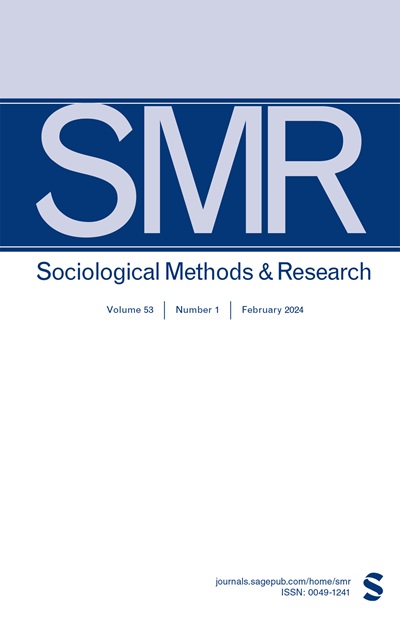Linking Input Inequality and Outcome Inequality
IF 6.5
2区 社会学
Q1 SOCIAL SCIENCES, MATHEMATICAL METHODS
引用次数: 4
Abstract
Inequality often appears in linked pairs of variables. Examples include schooling and income, income and consumption, and wealth and happiness. Consider the famous words of Veblen: “wealth confers honor.” Understanding inequality requires understanding input inequality, outcome inequality, and the relation between the two—in both inequality between persons and inequality between subgroups. This article contributes to the methodological toolkit for studying inequality by developing a framework that makes explicit both input inequality and outcome inequality and by addressing three main associated questions: (1) How do the mechanisms for generating and altering inequality differ across inputs and outcomes? (2) Which have more inequality—inputs or outcomes? (3) Under what conditions, and by what mechanisms, does input inequality affect outcome inequality? Results include the following: First, under specified conditions, distinctive mechanisms govern inequality in inputs and inequality in outcomes. Second, input inequality and outcome inequality can be the same or different; if different, whether inequality is greater among inputs or outcomes depends on the configuration of outcome function, types of inputs, distributional form of and inequality in cardinal inputs, and number of and associations among inputs. Third, the link between input inequality and outcome inequality is multiform; it can be nonexistent, linear, or nonlinear, and if nonlinear, it can be concave or convex. More deeply, this work signals the formidable empirical challenges in studying inequality, but also the fast growing toolbox. For example, even if the outcome distribution is difficult to derive, fundamental theorems on the variance make it possible to analyze the input–outcome inequality connection. Similarly, within specified distributions, the general inequality parameter makes it possible to express results in terms of both measures of overall inequality and measures of subgroup inequality.链接投入不平等和产出不平等
不等式常出现在变量对中。例子包括教育与收入、收入与消费、财富与幸福。想想凡勃伦的名言:“财富带来荣誉。”理解不平等需要理解输入不平等、结果不平等以及两者之间的关系——无论是人与人之间的不平等还是子群体之间的不平等。本文通过开发一个明确投入不平等和结果不平等的框架,并通过解决三个主要相关问题,为研究不平等提供了方法论工具包:(1)产生和改变不平等的机制如何在投入和结果之间有所不同?(2)哪个有更多的不平等——投入还是产出?(3)在什么条件下,通过什么机制,投入不平等影响产出不平等?研究结果如下:第一,在特定条件下,不同的机制支配着投入不平等和产出不平等。第二,输入不平等和结果不平等可以相同也可以不同;如果不同,则投入与结果之间的不平等程度是否更大取决于结果函数的配置、投入的类型、基本投入的分配形式和不平等程度、投入的数量和投入之间的关联。第三,投入不平等与产出不平等之间的联系是多种形式的;它可以是不存在的、线性的或非线性的,如果是非线性的,它可以是凹的或凸的。更深入地说,这项工作表明了研究不平等的巨大实证挑战,但也表明了快速增长的工具箱。例如,即使结果分布很难推导,但方差的基本定理使分析输入-结果不等式的联系成为可能。同样,在指定的分布中,一般不等式参数使得可以用总体不等式的度量和子群不等式的度量来表示结果。
本文章由计算机程序翻译,如有差异,请以英文原文为准。
求助全文
约1分钟内获得全文
求助全文
来源期刊

Sociological Methods & Research
Multiple-
CiteScore
16.30
自引率
3.20%
发文量
40
期刊介绍:
Sociological Methods & Research is a quarterly journal devoted to sociology as a cumulative empirical science. The objectives of SMR are multiple, but emphasis is placed on articles that advance the understanding of the field through systematic presentations that clarify methodological problems and assist in ordering the known facts in an area. Review articles will be published, particularly those that emphasize a critical analysis of the status of the arts, but original presentations that are broadly based and provide new research will also be published. Intrinsically, SMR is viewed as substantive journal but one that is highly focused on the assessment of the scientific status of sociology. The scope is broad and flexible, and authors are invited to correspond with the editors about the appropriateness of their articles.
 求助内容:
求助内容: 应助结果提醒方式:
应助结果提醒方式:


